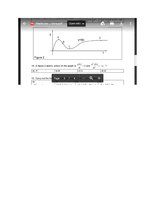Dear Maths Help People,
I am hoping to go to Uni this autumn to study engineering after doing an ACCESS course, I feel like I am ok on most of the maths but in the uni mock test they have sent me before my real entry test I simply can't understand question 14. I have atatched it, if anyone could explain it to me that would be great.
Thanks,
Alan.
I am hoping to go to Uni this autumn to study engineering after doing an ACCESS course, I feel like I am ok on most of the maths but in the uni mock test they have sent me before my real entry test I simply can't understand question 14. I have atatched it, if anyone could explain it to me that would be great.
Thanks,
Alan.

